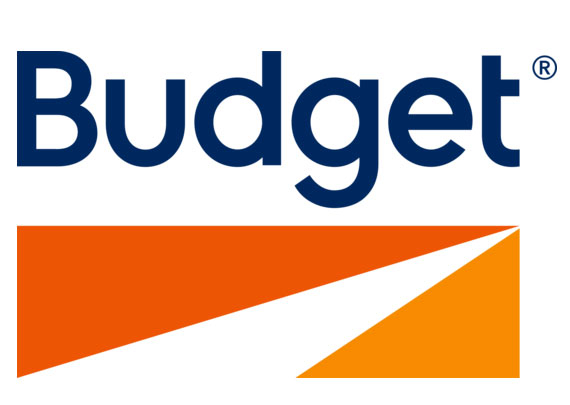You’ve just confirmed your flight, suitcase packed and ready. But before the excitement of discovery kicks in, there’s one crucial step: getting to Berlin Brandenburg Airport, DE. The city’s sprawling transport network beckons, but how do you choose the best way to leave the urban sprawl behind and glide smoothly to your terminal? Picture this: the morning hum of Berlin’s streets, the swirl of people heading towards trains, buses and taxis, and you, map open in hand, plotting your route through the maze of options. In my own last rush to catch a flight, I found myself weighing every possibility – from the sleek efficiency of the Berlin Brandenburg Airport, DE train to the convenience of a taxi, all while juggling time constraints and budgets. This firsthand experience taught me that understanding your transfer options is more than just logistics; it’s about setting the tone for your entire trip. So, how to get to Berlin Brandenburg Airport, DE without the stress? From budget hacks to accessibility pointers and insider tips, this article unpacks everything you need to glide to take-off with ease.

Morning bustle at Berlin Brandenburg Airport's transport hub, where journeys begin.
Why Plan Your Airport Transfer?
Planning how to get to Berlin Brandenburg Airport, DE isn’t just about catching a train or flagging down a taxi. It’s about navigating a sprawling transport nexus that blends urban vibrancy with the precision of aviation logistics. When last visiting, I learned that a smooth transfer can mean the difference between a relaxed start to your trip and a rushed scramble. Early decisions impact everything from the cost you pay to the stress you avoid during peak hours. Loading your bike for a park-and-ride, catching the rail from the city centre, or booking a rideshare: each option caters to different priorities—be it speed, price, accessibility, or sustainability.
Moreover, the airport is situated roughly 18 km southeast of Berlin’s city centre, well connected but spread out, so your choice will affect travel time considerably. Weather, group size, luggage, and timing also play crucial roles. Give yourself the gift of foresight by understanding the nuances of each transport mode, and you’ll glide through the start of your journey feeling in command, not overwhelmed.
Price & Time Grid: Your Options at a Glance
| Mode | Single Fare (€) | Return Fare (€) | Journey Time | First/Last Service | Night Surcharge |
|---|---|---|---|---|---|
| Taxi | 45–55 | n/a | 30–40 mins | 24/7 | Yes (15–25%) |
| Rideshare | 30–45 | n/a | 30–45 mins | 24/7 | Varies (typically less than taxi) |
| Rail (Regional + S-Bahn) | 3.80 | 7.60 | 30–35 mins | ~04:30 / ~01:00 | No |
| Express Bus (TXL, X7) | 3.60 | 7.20 | 40–50 mins | ~05:00 / ~23:00 | No |
| Local Bus | 3.60 | 7.20 | 50–70 mins | ~04:30 / ~00:30 | No |
The table shows a clear spectrum. Taxis and rideshares offer door-to-door convenience with flexible hours but at a premium cost—especially with night surcharges. Meanwhile, rail options like the Berlin Brandenburg Airport, DE train provide quick, budget-friendly services without night price hikes. Express buses slot in between speed and economy, while local buses provide the cheapest fares but at the expense of time. Planning your mode depends heavily on your schedule, luggage, and budget.
Step-by-Step Guide for Each Mode
Taxi
- Locate the official taxi ranks at your hotel or city centre locations such as Alexanderplatz or Hauptbahnhof.
- Ensure the taxi meter is running or agree on an approximate fare before departure to avoid surprises.
- Have your terminal details handy; Berlin Brandenburg Airport is served by a well-known taxi-friendly drop-off area.
- Allow 30–40 minutes travel time during the day, longer during peak hours (especially morning and early evening).
- Tip the driver 5–10% if service was good — Berlin taxi drivers generally appreciate this.
Rideshare
- Use apps like Free Now or Bolt, popular in Berlin, to book your rideshare from city centre to Berlin Brandenburg Airport, DE.
- Confirm your pick-up point — crowded spots might require a short walk.
- Check estimated fares upfront and compare peak vs off-peak pricing.
- Track your driver's arrival for a smooth handoff.
- Communicate terminal preferences through the app or directly to your driver.
- Pay through the app for added security and convenient receipts.
Rail
- Buy a Berlin ABC zone ticket covering the city centre and airport zone; valid for trains and buses (available at ticket machines and apps).
- Catch marked Airport Express (FEX) trains from Hauptbahnhof or Ostbahnhof, or Regional trains S9 / S45 connecting direct to the Berlin Brandenburg Airport, DE train station.
- Follow station signage for the correct platform, usually well-marked in English and German.
- Prepare for a roughly 30-35 minute journey; trains run every 20 minutes throughout most of the day.
- Upon arrival, follow signs for your terminal; luggage escalators and elevators are abundant.
Bus
- Purchase a valid single ticket or day pass for zone C; can be bought at ticket machines or onboard (cash only on some routes).
- Take the X7 express bus from Rudow U-Bahn station or TXL bus from central locations.
- The journey can take between 40 to 70 minutes depending on the service.
- Check schedules carefully as some buses end earlier in the evening.
- Board with your luggage; some buses have luggage racks but no special assistance.
- Alight at the main Berlin Brandenburg Airport, DE bus stop and follow signs to terminals.
Returning a Rental Car
- Top up fuel at a nearby petrol station as per your rental agreement to avoid refuelling fees (Hertz, March 2025).
- Follow airport signage for Rental Car Return; clearly marked on exit roads from the highway.
- Park your vehicle in the designated rental area; check for instructions from your rental company.
- Inspect the car with a company agent or use the provided checklist to report any damages.
- If after-hours, use the drop-box for keys provided by the rental provider—note your mileage and fuel levels.
- Take the shuttle bus service from the rental return lot to the main Departures terminal; they run frequently every 10–15 minutes.
- Keep your rental documents and shuttle ticket handy for a smooth transition to check-in.
Money-Saving Hacks
- Buy a Berlin ABC zone day ticket if making round trips including airport transfers; single-ride tickets add up fast.
- Use taxi apps with fare estimates to avoid unexpected high-night surcharges on traditional taxis.
- Consider group rideshares when travelling with companions to split costs efficiently.
- Check discount offers for rail tickets via Deutsche Bahn’s digital portals ahead of time.
- Try park-and-ride lots on the city’s outskirts, combining cheaper parking with efficient rail transfers.
Peak-Hour vs Off-Peak Travel Times
Peak-hour travel to Berlin Brandenburg Airport, DE often means the morning rush (06:30–09:00) and early evening (16:30–19:30) on weekdays when commuters flood the transit lines and roads. During these windows, journey times for taxis and rideshares can balloon by 15 to 25 minutes, and local buses and trains grow crowded. The advantage of rail lies in its frequency and predictable schedules during these periods, offering a solid alternative to road traffic delays.
Off-peak hours—midday and late evening—bring a breath of fresh air to your transfer choices. Quieter streets reduce taxi and rideshare waits, buses run less full, and the Berlin Brandenburg Airport, DE train seats are typically available. Planning your departure around these quieter times means less stress and often lower fares, especially for rideshares where surge pricing diminishes.

Accessibility & Luggage Factors
Berlin Brandenburg Airport, DE prides itself on wheelchair accessibility with elevators and ramps available at all transport entry points. Trains and buses servicing the airport usually offer priority seating and designated wheelchair spaces, but it’s prudent to check individual service providers for assistance options. When travelling with bulky luggage, taxis and rideshares provide the simplest door-to-door convenience eliminating multiple transfers. Public transport, while economical, demands organisation to manage luggage alongside other passengers—especially during busy periods.
The train station at the airport is built for ease, with escalators and lifts connecting the platform directly to terminals. If you are travelling with oversized or multiple bags, consider a taxi or pre-booked shuttle for a less taxing experience. Berlin’s local buses typically have limited luggage facilities but often stop close to terminals.
Carbon-Smart Alternatives
Environmentally conscious travellers can explore shared shuttle services, which reduce individual emissions by grouping passengers headed to the airport. Bike-and-ride options are increasingly popular—cycle to one of the many secure bike parking hubs near S-Bahn stations, then hop on the train to the airport, blending exercise with low-carbon transit. Likewise, park-and-ride schemes at the city's fringe allow drivers to leave their cars responsibly behind and use public transport for the remainder, minimizing emissions from inner-city traffic.
Berlin’s transport infrastructure continues to improve its greenness, encouraging travellers to weigh convenience against environmental impact when deciding how to get to Berlin Brandenburg Airport, DE.
Sample 08:00 Flight Timeline
- T-12 Hours: Confirm transfer booking or check public transport schedules for early morning services.
- T-4 Hours: Final luggage packing and check-in online to save time at the airport.
- T-2 Hours: Depart from your accommodation; if taking public transport, allow extra time for delays.
- T-0: Arrive at Berlin Brandenburg Airport, DE with time to navigate security and relax before boarding.
Hidden Pitfalls & Local Quirks
While Berlin’s transport network is reliable, a few local quirks can trip up even seasoned travellers. Paying attention to these will smooth your journey:
- Strike Days: Public transport strikes happen sporadically; check local news ahead to avoid service disruptions.
- Cash-Only Buses: Some local buses require exact change onboard—carry small coins to avoid issues.
- Motorway Tolls: While there are no tolls for passenger cars on roads to the airport, rental car drivers beware of parking surcharge zones.
Eight Mistakes Travellers Make
- Not validating or buying the correct ticket zone for public transport, leading to fines.
- Underestimating journey times during Berlin’s unpredictable rush hours.
- Failing to pre-book taxis or rideshares for early morning or late night flights.
- Assuming all buses accept card payments—some require cash only.
- Ignoring luggage limitations on local buses, causing discomfort or missed stops.
- Not checking rental car fuel policies before returning the vehicle at Berlin Brandenburg Airport, DE.
- Failing to factor in shuttle transfer times between rental return lots and terminals.
- Over-reliance on last-minute transport at the airport during busy travel days.
Frequently Asked Questions
What is the fastest way to get to Berlin Brandenburg Airport, DE from downtown?
The fastest is generally the Airport Express train (FEX) or the S-Bahn lines (S9 or S45), with journey times around 30 minutes without traffic delays.
Are taxis available 24/7 to Berlin Brandenburg Airport, DE?
Yes, taxis operate 24 hours a day, though night surcharges apply and fares can increase during peak demand or strikes.
Can I easily take a bus to Berlin Brandenburg Airport, DE late at night?
Buses run until around midnight, but early morning or very late night travellers should consider taxis or rideshares, as public bus frequencies diminish overnight.
Is it better to take a rideshare or a taxi to the airport?
Rideshares often offer cheaper fares and app-based convenience, but taxis provide guaranteed availability and fixed pricing in some cases; preferences vary by traveller needs.
Call to Action
Planning your route is critical, but your insights matter too. Have you found a hidden gem of transport to Berlin Brandenburg Airport, DE? Facing any challenges none mentioned here? Share your experiences and questions in the comments below. Don’t miss out on future travel tips—subscribe for updates that put you in the driver’s seat of your journeys.






